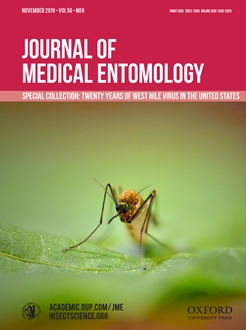West Nile virus (WNV) (Flaviviridae: Flavivirus) was discovered in Africa more than 80 yr ago and became recognized as an avian pathogen and a cause of neurologic disease in horses largely during periodic incursions into Europe. Introduction of WNV into North America stimulated great anxiety, particularly in the equine industry, but also for pet owners and livestock producers concerned about the effect of WNV on other domestic animals. Numerous subsequent studies of naturally occurring and experimentally induced disease greatly expanded our understanding of the host range and clinical consequences of WNV infection in diverse species and led to rapid development and deployment of efficacious vaccines for horses. In addition to humans, horses are clearly the animals most frequently affected by serious, sometimes lethal disease following infection with WNV, but are dead-end hosts due to the low-magnitude viremia they develop. Dogs, cats, and livestock species including chickens are readily infected with WNV, but only occasionally develop clinical disease and are considered dead-end hosts for the virus.
How to translate text using browser tools
24 September 2019
West Nile Virus: Veterinary Health and Vaccine Development
Angela M. Bosco-Lauth,
Richard A. Bowen
ACCESS THE FULL ARTICLE
It is not available for individual sale.
This article is only available to subscribers.
It is not available for individual sale.
It is not available for individual sale.

Journal of Medical Entomology
Vol. 56 • No. 6
September 2019
Vol. 56 • No. 6
September 2019
domestic animal
equine
vaccine
West Nile virus




